A new research study has been published on paraxanthine, showing better cognitive performance from paraxanthine than caffeine and placebo after a 10km run.[1]
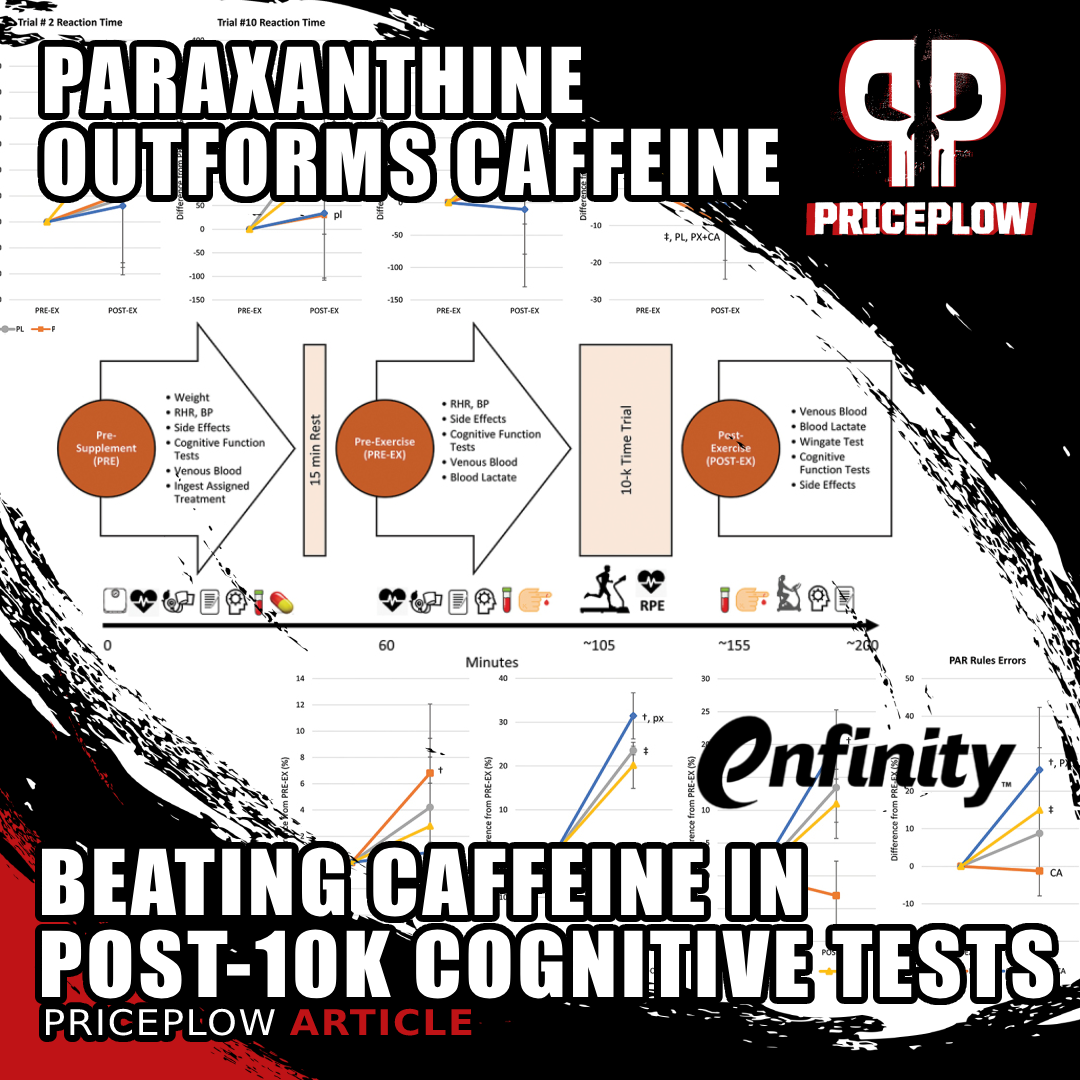
A new study finds enfinity® paraxanthine outperforms caffeine in boosting cognitive function after a 10k run. Clear thinking under pressure is key to winning, and paraxanthine could be the edge you need.
If you've been following the dietary supplement space the past couple of years, you've doubtless heard of enfinity paraxanthine, sometimes dubbed as caffeine 2.0.
Paraxanthine, a primary metabolite of caffeine, provides essentially the same stimulant, metabolic, and performance as caffeine, without caffeine's most noticeable drawbacks. It goes by the trade name enfinity, and is sold and distributed by TSI Group, Ltd.
The brief benefits of paraxanthine
Most of paraxanthine's superiority can be explained in two general attributes:
- Taking paraxanthine instead of caffeine circumvents the production of caffeine's other two metabolites – theophylline and theobromine – which have longer half-lives than caffeine and drive a significant portion of caffeine's side effect profile.
- As corollary to this, paraxanthine has faster metabolism and shorter metabolic half-life, so it can be taken a bit later in the afternoon than caffeine.
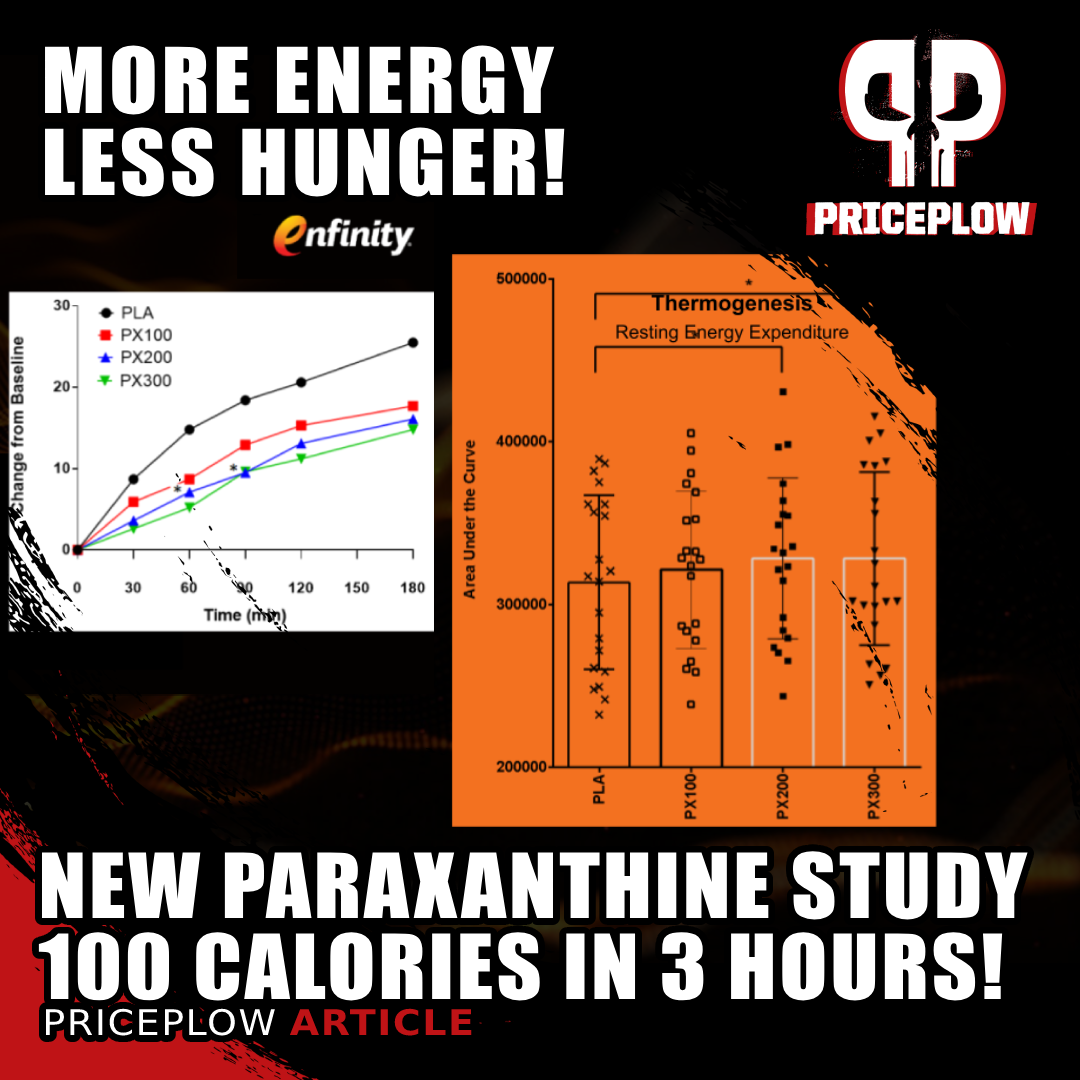
New research data has been published on enfinity (paraxanthine), showing increased energy expenditure compared to placebo (100 calories in 3 hours) -- yet it decreased appetite and heart rate![2]
This, and far more, is covered in our comprehensive, scientifically-referenced article, "Paraxanthine: Caffeine's Major Metabolite for Laser-Targeted Energy".
The bottom line is that using enfinity enables users to significantly reduce anxiety and jitteriness, and target the desired effects in a tighter time window. It's a lot less likely to cause sleep disturbances, meaning there's less potential to interfere with mental and physical recovery.
We also recently analyzed new research showing that paraxanthine reduces appetite while increasing energy expenditure (to the tune of about 100 calories in 3 hours),[2] but there was more data published around the same time:
How we got here: A recap of existing paraxanthine research
Arguably, improving performance is the sphere where caffeine-paraxanthine comparisons are currently best supported by research.
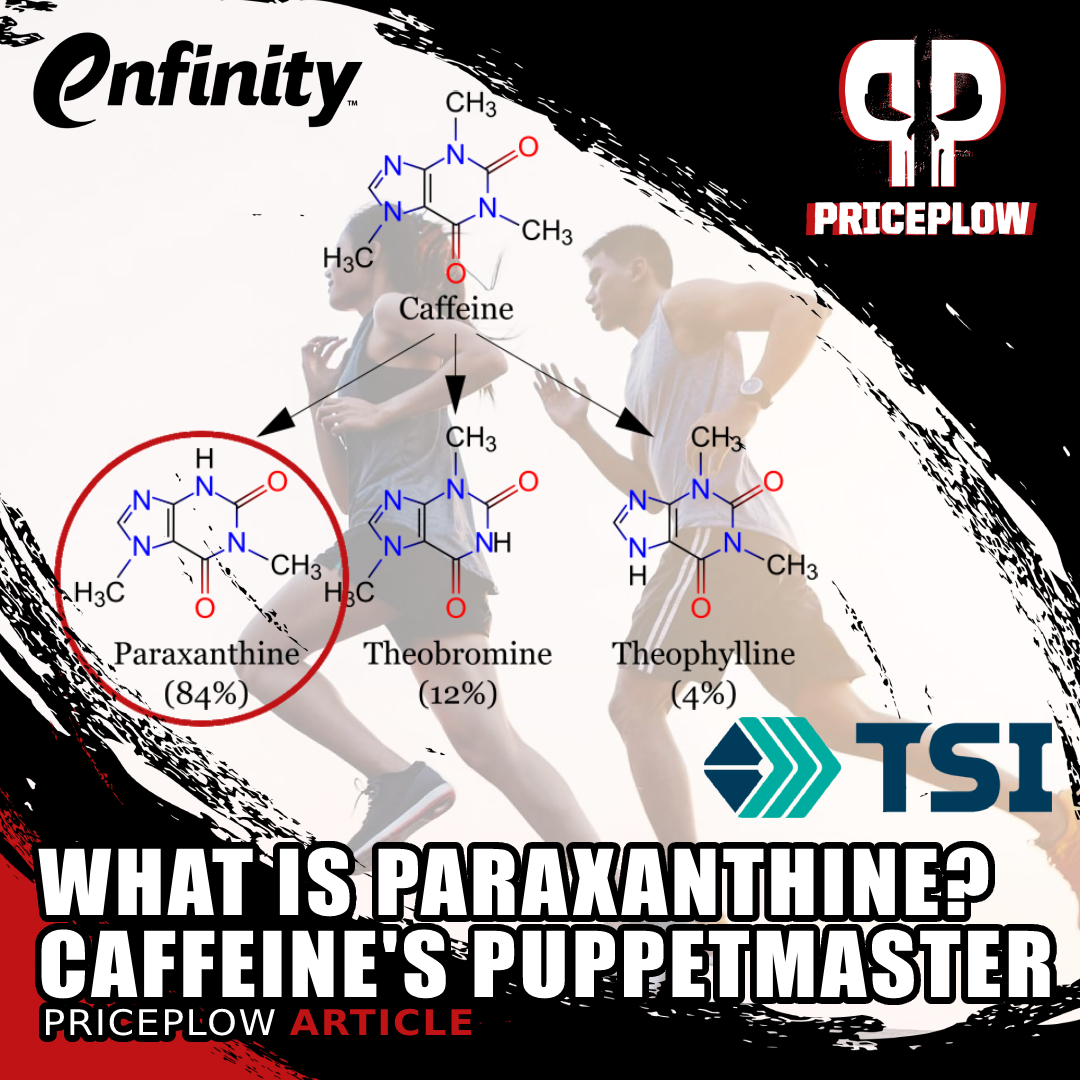
Paraxanthine is the primary metabolite of caffeine, providing most of caffeine's beneficial effects. Now you can take it directly with enfinity!
Studies have demonstrated that paraxanthine, like caffeine, can increase the body's rate of fat burning (lipolysis)[3] and energy expenditure,[2] which aren't just fat-burning mechanisms, but could be ergogenic as well. Similar to caffeine, paraxanthine anti-fatigue effects through adenosine antagonism,[4] and upregulates dopaminergic activity.[5]
Two different randomized, double-blind, placebo-controlled studies found that paraxanthine administration caused significant improvements in executive function, reaction time, mental error rate, sustained attention, accuracy, response control to visual stimuli, and memory.[6,7]
The same advantage has been seen in athletic performance, where paraxanthine was shown to significantly improve muscle growth, increase strength, and improve athletic endurance in a preclinical trial.[8]
2024 Paraxanthine Study #2 – Beating Caffeine in Post-10k Cognitive Tests!
Now we have a new paraxanthine study looking at mental and physical performance together – more specifically, paraxanthine's ability to improve cognitive performance in the context of strenuous exercise.[1]
Standardized cognitive tests across paraxanthine research
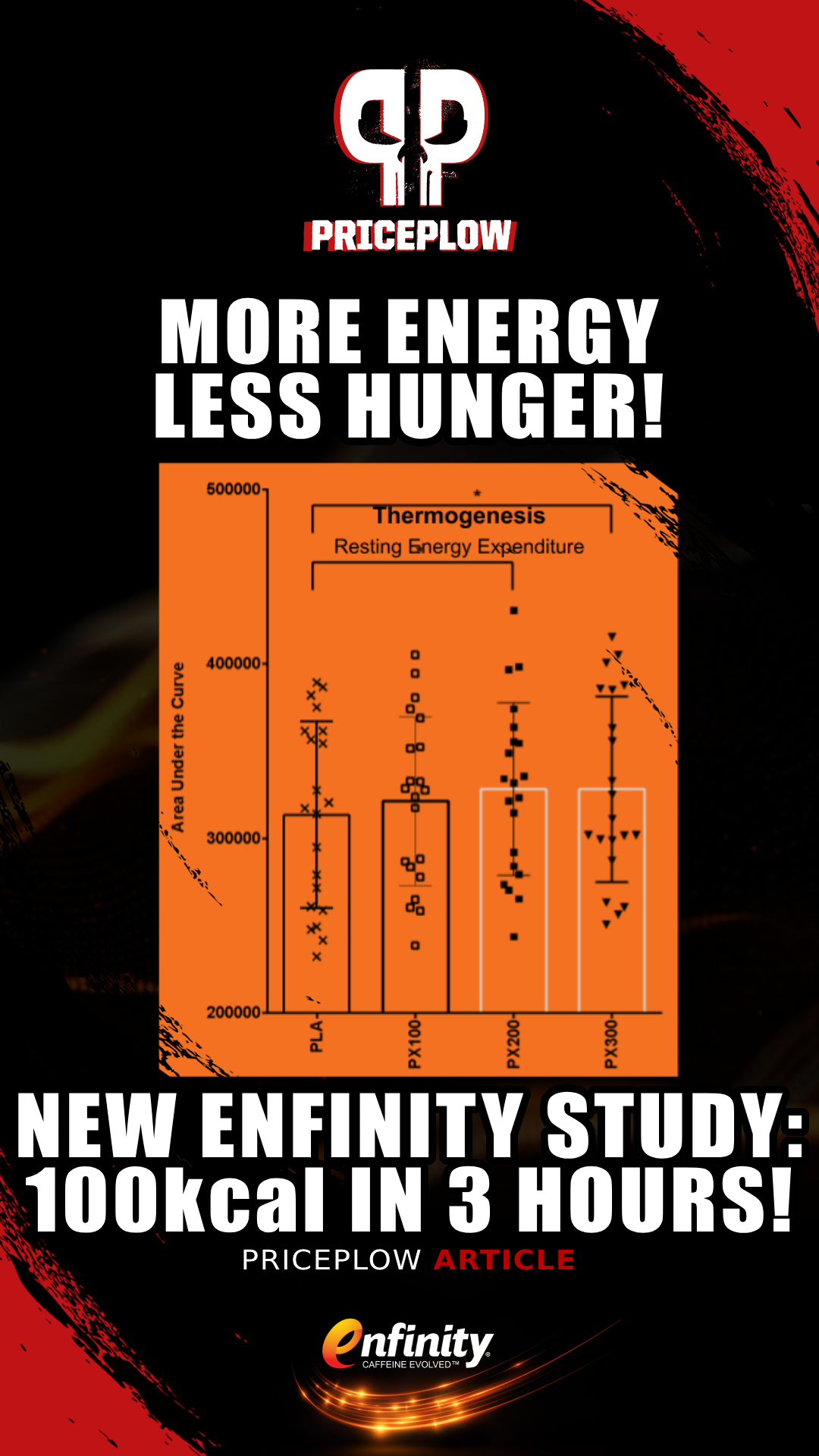
New research data has been published on enfinity (paraxanthine), showing increased energy expenditure compared to placebo (100 calories in 3 hours) -- yet it decreased appetite and heart rate![2]
The cognitive tests are described at the bottom of this article -- the researchers used similar tests as two previous trials.[6,7] This is great because scientists have settled on standard neuropsychological assessments, enabling consistent measurements across multiple studies. This makes it easy for us to compare the results of this new study[3] to the previous studies we've cited,[6,7] giving us a coherent development of the paraxanthine research literature.
Study Methods
This was a double-blind, randomized, and crossover study. The advantages of a crossover study, particularly with a small sample size like this one, are that it eliminates the potentially confounding effect of individual subject variability, by enabling the subjects to serve as their own controls. This is done by having them repeat the study multiple times, once for each treatment condition.[1]
So, here were the four treatment conditions:
- 400 mg of a placebo (PL)
- 200 mg of PL + 200 mg of caffeine (CA)
- 200 mg of PL + 200 mg of paraxanthine (PX)
- 200 mg PX + 200 mg of CA (PX+CA)
Participants visited the study lab five times – one familiarization session, followed by four experimental sessions. In the familiarization session, researchers explained the study protocol to the participants, provided informed consent, and had the participants fill out a medical questionnaire. They also measured the participants' height, weight, resting heart rate, and resting blood pressure. VO2max was also measured.[1]
One really interesting thing about this study is that the researchers had the participants repeat the cognitive tests three times before the experiment even began, in order to ensure a consistent repeatable baseline. This eliminates the potential confounding effect of the participants getting better at taking the tests throughout the study period.
This study went to extraordinary lengths in order to ensure adequate experimental controls. For example, the subjects were instructed to abstain from vigorous activity, alcohol intake, and OTC medications for the 24 hours preceding the experiment, plus 8-12 hours of fasting before visiting the lab.
Mostly men, all runners with an average mile split under 8 minutes
The participants had an average age of 26, and consisted of mostly men (11 males and 1 female). They were selected partly for their pre-conditioning as runners – each participant had to demonstrate an average mile split time of 8 minutes or less, which is very respectable.
In other words, these were trained athletes, which is definitely what we like to see in sports nutrition studies. Untrained athletes tend to respond to supplements more strongly than trained athletes, since their initial adaptations to the exercise condition have not yet been completed. So, conducting a study in trained athletes more or less automatically lends greater credence to the results.
Each of the four experimental sessions proceeded as follows:[1]
- After filling out a side effects questionnaire, taking the cognitive tests (PRE), the participants ingested one of the four randomly assigned treatment conditions.
- Then, after resting for fifteen minutes, the subjects repeated the cognitive tests and side effects questionnaires (PRE-EX), they performed a 10 kilometer time trial.
- After finishing the race, they once again took the cognitive tests, plus a Wingate test (POST-EX).
Study results
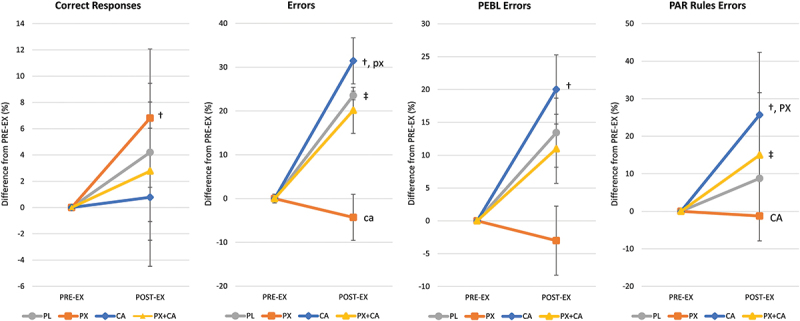
On the Berg-Wisconsin Card Sorting Test (BCST), paraxanthine (PX) looks like the clear winner of this four-way contest, but not all of these effects achieved statistical significance.[1]
The analysis of the Berg-Wisconsin Card Sorting Test (BCST) demonstrated significant improvements in a few effects from treatments involving PX (Placebo X) and PL (Placebo L) – correct responses significantly increased from pre-exercise (PRE-EX) to post-exercise (POST-EX) under PL treatment (p = 0.011) and similarly for PX treatment (p = 0.028). Additionally, a moderate effect size was observed in errors under paraxanthine treatment compared to PX plus CA (Caffeine Additive) treatment, though the difference was not statistically significant (p = 0.077).[1]
The big takeaway here was that paraxanthine increased the number of correct responses from PRE to POST-EX by 6.8%, while POST-EX errors with paraxanthine ingestion tended to be lower than CA.[1] Paraxanthine also decreased POST-EX perseverative errors – the PX treatment caused a 26.9% reduction compared to caffeine. In other words, PX beat caffeine on the Berg-Wisconsin Card Sorting Test.[1]
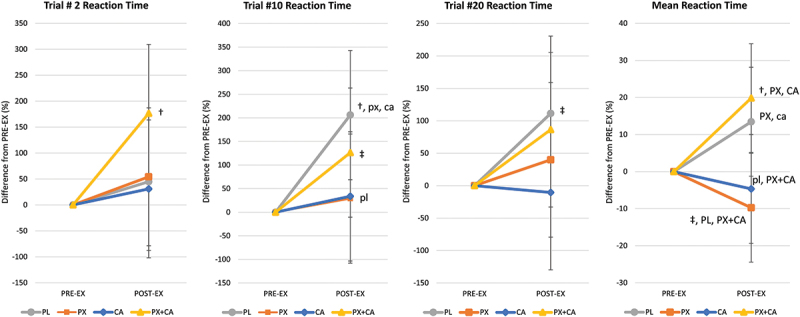
On the The Psychomotor Vigilance Task Test (PVTT), only caffeine and paraxanthine promoted faster mean reaction times, and paraxanthine beat caffeine.[1]
Results on The Psychomotor Vigilance Task Test (PVTT) were more interesting. Statistical analysis showed that post-exercise reaction times in trial #2 were faster under paraxanthine and caffeine treatments compared to combined PX+CA treatment.
The mean reaction time tended to increase with placebo and PX+CA, while decreasing from PRE-EX to POST-EX with paraxanthine alone – and, as you can see from the inset graph, by quite a huge margin. Analysis of mean changes from PRE-EX values showed that placebo and PX+CA treatments led to increased reaction times, whereas paraxanthine and caffeine promoted faster reaction times.
No synergistic effects between caffeine and paraxanthine
Another interesting finding here is that the combination of paraxanthine and caffeine did not show any synergistic effects, which, as the authors of the paper point out, strongly implies that paraxanthine's nootropic mechanism of action is unrelated to caffeine's. In other words, paraxanthine isn't just beating caffeine at caffeine's game – it's also doing something else entirely.
The researchers speculate that paraxanthine's unique nootropic effects might be due to its inhibition of phosphodiesterase 9 (PDE9), which increases nitric oxide (NO) neurotransmission.[1]
More details on the psychological tests performed
As mentioned above, we now have three studies in common that each use two important psychometric tests.[1,6,7] Let's explain them below:
-
The Berg-Wisconsin Card Sorting Test (BCST)
This is a neuropsychological assessment used to measure executive function, specifically cognitive flexibility, problem-solving, and the ability to adapt to changing rules. Participants are presented with cards that differ in color, shape, and number of symbols, and must match them to target cards based on an unknown sorting rule.
A brief intro to the science of paraxanthine / enfinity. Image courtesy of MuscleTech, who created the supplement with the iQ Series of supplements.
Feedback is provided after each attempt, and the sorting rule changes periodically without warning. Key metrics include correct responses, perseverative errors (continuing with a previous rule), and non-perseverative errors.
-
The Psychomotor Vigilance Task Test (PVTT)
This measures sustained attention and reaction time to visual stimuli. Participants respond to a visual cue by pressing a button as quickly as possible. The PVTT assesses how well individuals maintain focus and alertness over extended periods, recording reaction times and lapses in attention. It is widely used in research on fatigue, sleep deprivation, and the effects of stimulants on cognitive performance.
With consistent use of these exams, we can now compare results in different situations across time, greatly increasing our body of knowledge and enabling higher-quality comparisons between different trials.
Conclusion: Outperforming Caffeine? It's Time to Take Note
This is the first randomized controlled study to look at paraxanthine's impact on cognitive function following exercise. Although there's a tendency to overlook nootropics in an athletic context, maintaining cognitive function in sports is absolutely essential to winning. It's in the final stretch of a long game, when everyone is exhausted, that clear thinking, fast reactions, and accurate decision-making is most likely to decide the outcome.

Caffeine has three major metabolites, and one of them (paraxanthine) does the heavy lifting. The other two have very long half-lives, which could be interfering with your experience. Image courtesy TSI Group
Having used both ingredients, the data makes sense from an anecdotal perspective -- caffeine's harder-hitting, up-and-down effect may support some types of athletic activities, but it comes at a cognitive cost once the ergogenic effects have run their course. Once caffeine's done its job, it's not gone yet -- you're simply left with the more detrimental metabolites, and the entire "crash" process can be a massive drag on both cognitive and physical performance.
While preliminary, the data also indicates that paraxanthine outperforms caffeine via complementary mechanisms of action, which only strengthens the case that paraxanthine is on track to be caffeine's replacement in sports nutrition contexts – caffeine 2.0.
There's certainly more data coming on enfinity paraxanthine. You can head back to our main paraxanthine article, or sign up for our news alerts below:
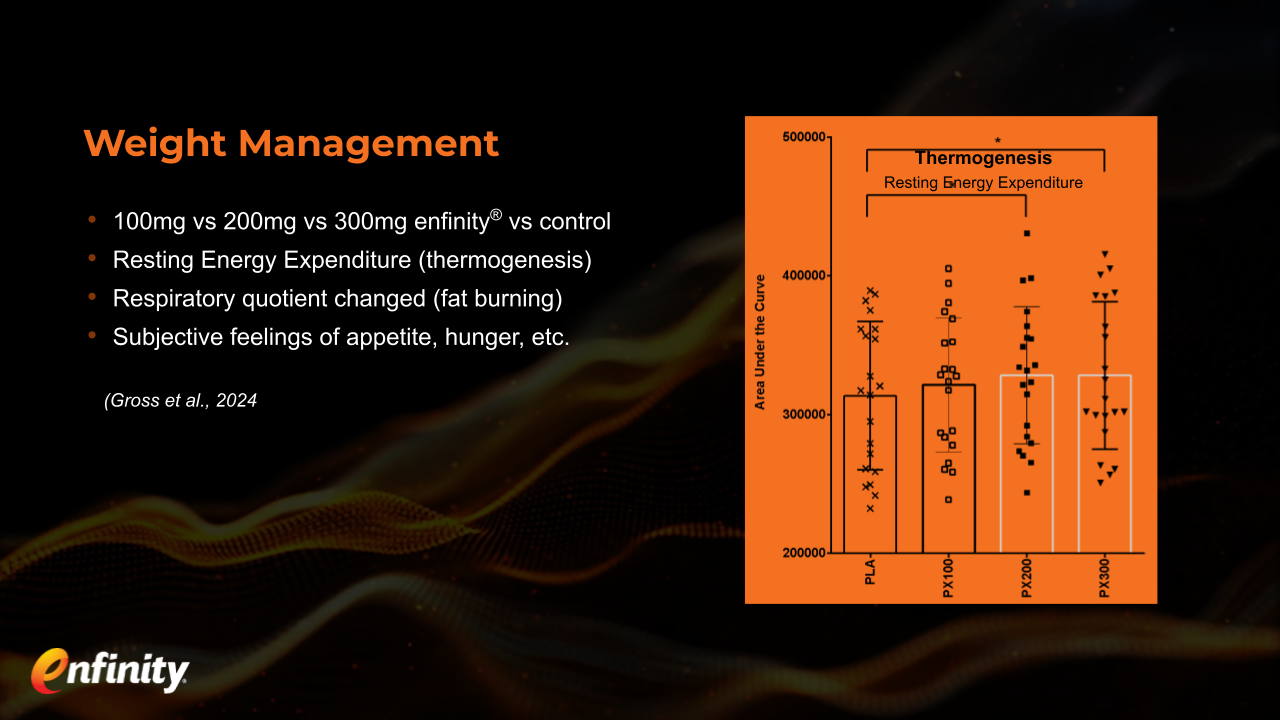
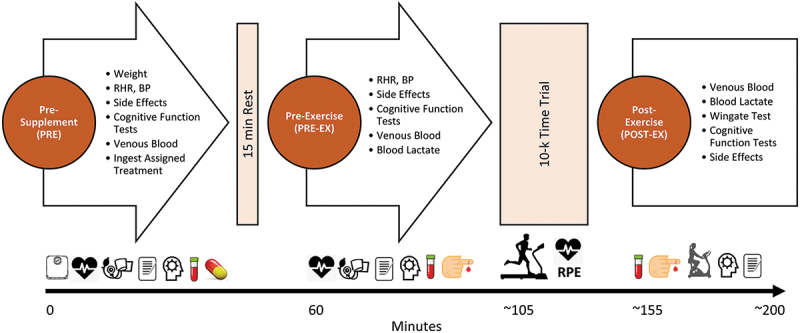
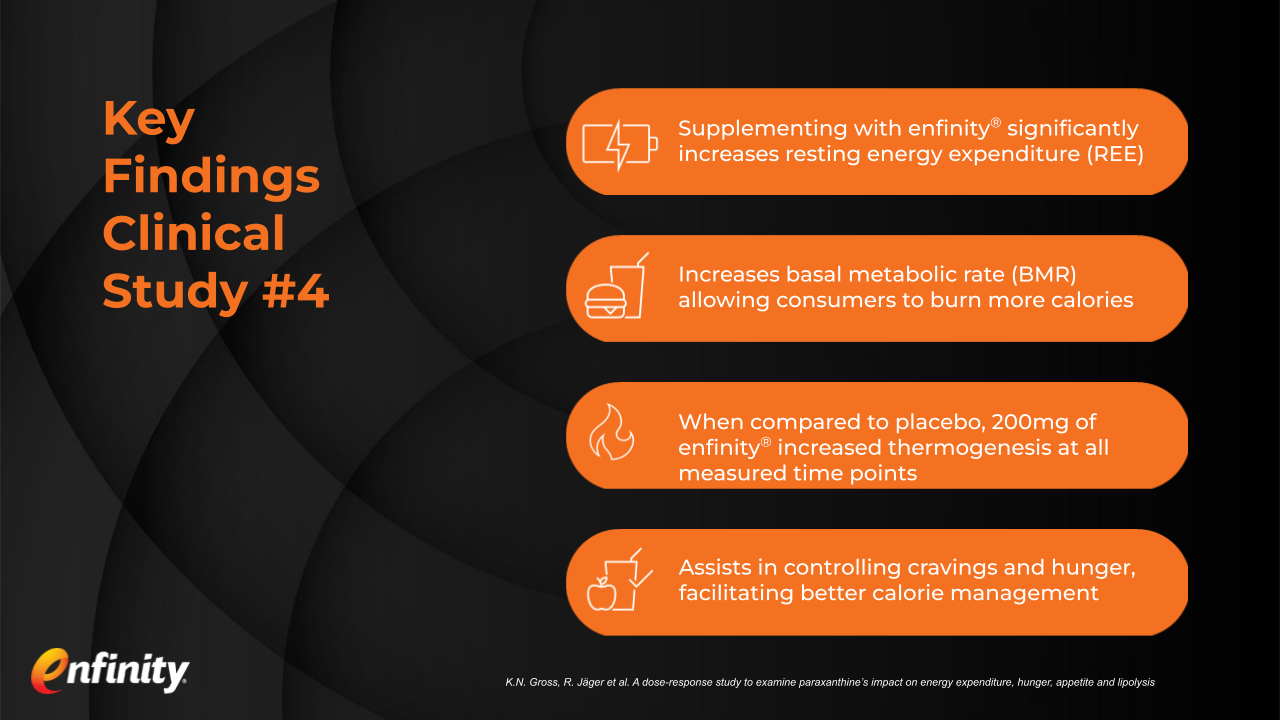
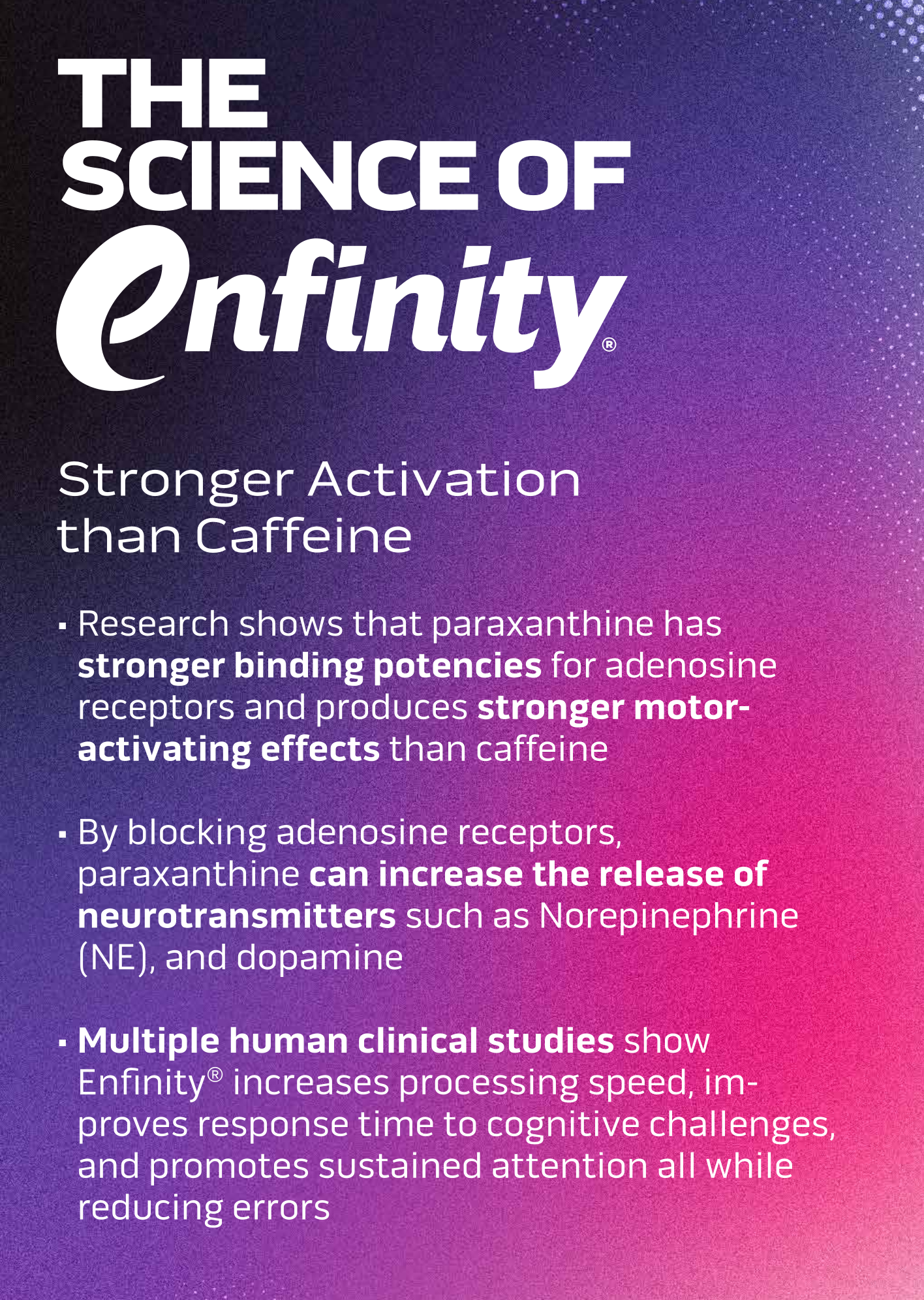


Comments and Discussion (Powered by the PricePlow Forum)